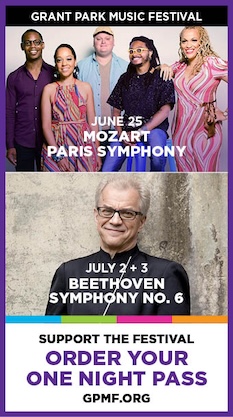Phillip Bush brings insight, blazing virtuosity to American piano music
There have been any number of musical events across the country in the past week marking the 100th anniversary of the Armistice.
The program presented by Phillip Bush Tuesday night at PianoForte provided one of the more original Armistice-inspired events. Titled “Piano USA 1918,” Bush’s recital offered a snapshot of the myriad styles of keyboard music being written by American composers around the end of the Great War.
It’s too bad such an intelligent and discerning program attracted only about a dozen hardy souls on a chilly night. But even with the light turnout, the intriguing selections and Bush’s impressive artistry provided one of the most illuminating piano events of the season.
A veteran chamber musician and contemporary music advocate, Bush performed with the Philip Glass Ensemble as well as with Steve Reich for over two decades. Currently a professor at the University of South Carolina School of Music, he is clearly a fine teacher as well, as shown by his engaging, concise and on point introduction to the evening.
As Bush noted, the program presented a somewhat fanciful idea of what a concert of contemporary American piano music might have looked like in 1918. There were a couple stretches historically—the Marion Bauer works weren’t written until three years later and, though composed in 1915, Ives’ epic Concord Sonata had to wait until 1939 to be premiered in its full version. Still, both the stylistic variety and Bush’s consistently strong performances made the best possible case for the program and the music.
While the Ives sonata was the main event of the evening, the first section proved just as rewarding, with a nicely diverse sampler of works by five homegrown composers of the era.
Arthur Foote (1853-1937) was the grandfather of the group, in terms of age and the most conservative in idiom. Yet his music is unerringly well-crafted and the best of Foote’s chamber music merits revival. Bush made an admirable case for his music with two excerpts from the Five Silhouettes (1913). The pianist’s yielding expression brought out the lovely Romantic idyll of “Dusk,” with the rippling light bravura of “Flying Cloud” making worthy contrast.
Charles Tomlinson Griffes’ “The White Peacock” (from his 1915 Roman Sketches) is a better-known work, and here Bush assayed the development from lilting Impressionism to imposing, chromatic climax and back again. In two excerpts from Marion Bauer’s Six Preludes (1921), a more patient tempo in Prelude No. 2 in A minor might have allowed this melodic miniature to bloom more effectively; yet the more emphatic virtuosity of No. 3 in D minor went with all dynamic dispatch.
After Ives, the most envelope-pushing composers of the era were Leo Ornstein and Henry Cowell, and both were represented.
Ornstein’s Suicide in an Airplane (1916)—inspired by a true intentional crash—still sounds remarkably modern over a century later. Rumbling bass ostinatos paint the airplane engine with striking accuracy, and Bush built the central climax into a sonic fury of frantic agitation, the massive tone clusters and aggressive fistfuls of notes seeming to reflect the psychological desperation of the suicidal pilot.
In Henry Cowell’s The Tides of Manaunaun (1917)—amazingly his first published work—the composer takes tone clusters to an even more radical level. Bush conjured up a massive sonority depicting the turbulent Irish waves with sweeping clusters played with his left arm, set against the majestic, folk-like melody in the right.
And so on to Ives’s Piano Sonata No. 2 “Concord, Mass., 1840-1860.” As Bush noted, the Concord Sonata is a very “Classical” piece in structure, despite the audacity and musical anarchy of its four movements, inspired by Transcendentalist literary figures of the 19th-century. Ives’ epic work has earned its deserved reputation as one of his finest and most characteristic works in recent decades, yet performances remain rare events, largely due to the score’s intensely challenging demands.
It was a fascinating experience to see the mild-mannered, professorial Bush unleashed on Ives’ mighty canvas, attacking the massive “Emerson” opening with daunting power and outsized virtuosity. The pianist maintained consistent energy and crackling tension throughout this 16-minute movement, while finding a linear line through the relentless density of Ives’ contrapuntal thickets. Bush charted the ebb and flow expertly throughout Ives’ hectic gamboling style, easing fluidly into the restrained episodes while bringing staggering bravura to the climaxes.
The ensuing “Hawthorne” movement serves as a scherzo of sorts. In this kaleidoscopic collage Bush conveyed the restless, fantastical quality of the author’s prose and characters— the hyperactive pages seem to embody Clifford’s frantic exhilaration and sensory overload on his train ride in House of the Seven Gables. The alternation of a stately hymn tune with violent chords was aptly jarring, and Bush brought out the swagger of the ragtime section, building inexorably to a thunderous ferocity at the coda.
“The Alcotts” provided contrast with its prevailing sense of domestic calm and peaceful repose. “Thoreau” proved an apt finale in Bush’s hands—the impassioned sections given full strength, yet concluding with a stoic, searching expression and solace that were truly, well, transcendental, in the closing pages.
Let us hope that Phillip Bush returns to Chicago soon with another diverting program of neglected American piano music.
Posted in Performances


